Every week, my newsletter subscribers get links to some of the goodies that I’ve come across on the internets. Here were the goodies that my peeps got their learn on from this past July. If you want to get a copy of my weekend learning goodies every Friday, fill out the form below. That way you can brag to all your friends about the cool things you’ve learned over the weekend. [yikes-mailchimp form=”1″ submit=”Hell yes I want weekend learning goodies every Friday!”] Biggest Lesson of the Month Maximize proximal before spending time distal. I’ve just seen too many patients where we applied some type of axial intervention, which led to profound changes distally. Position governs all. Thank you for making me realize this daddy-o. Quote of the Month Only those who dare to fail greatly can ever achieve greatly. ~Robert Kennedy Rehabilitation Blog: What is the Best Test to Discern an ACL Tear? My boy Scott Gray put together a rock solid post on diagnosing an ACL tear. I’ve been very big as of late on filling the differential diagnosis hole in my game, and this one was beyond helpful. I wish I had heard of the lever test last year when I had a guy pop his ACL in-game. Blog: The Quadruped Rockback Test: RIP My buddy Doug Kechijian ever so succinctly puts this dated test to rest. There is so much more that goes into deciding squat depth than can be accurately accounted for with this test. Performance Research: The effects of two
Read MoreAuthor: Zac Cupples

Stress Response, Proximal First, Sensation Loss, and Your Health – Movement Debrief Episode 12
Let me guess, you are devastated you missed last night’s Movement Debrief. You should be. It was by far the most interactive debrief we had yet. Loved how active everyone was, and definitely some people help me get better. Kudos to Steve, Jo, Yonnie-Pooh, and the many others who commented on today’s Debrief. Here’s what we talked about: How the stress response impacts many areas Treatment hierarchies How to restore sensation loss post-surgery Functional Medicine Why taking care of your health helps others If you want to watch these live, add me on Facebook, Instagram, or Twitter. (occasionally) They air every Wednesday at 8:30pm CST. Enjoy. Stress Response Proximal First Sensation Loss Your Health
Read More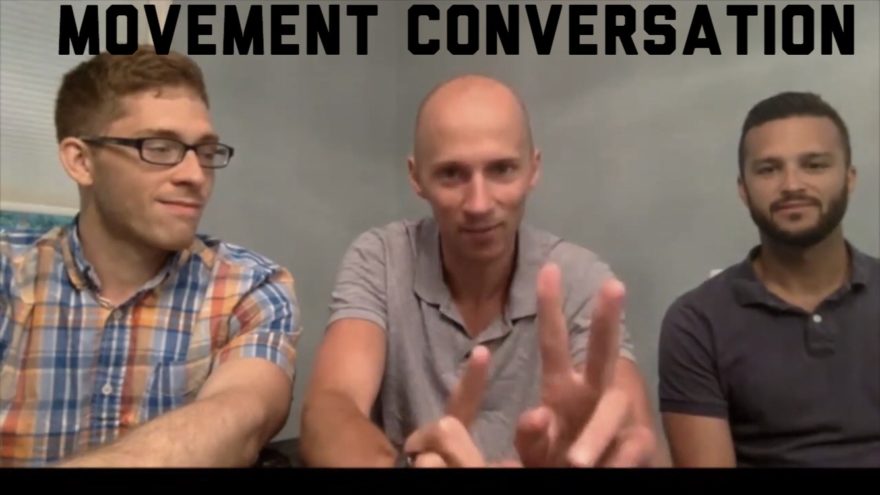
A Conversation on Learning with Lance Goyke and Jason Byrne
I recorded a really good conversation with two good buddies of mine, Lance Goyke and Jason Byrne. Lance is a strength coach, photographer, student, and writer. He runs the show at IFAST University, coaches at IFAST, and runs his own excellent blog and Youtube channel. He is also a dear friend of mine, one of the first people I met when I interned with Bill Hartman at IFAST. Jason is an Athletic Trainer at Brandeis University and with the Boston Cannons. He is an avid learner, tinkerer, and phenomenal human being. I truly admire his ability to connect with others, his humility, and comfort with learning from failures. Check him out on Twitter or email him at jbyrneatc@gmail.com We went off the top of the dome on this one, as there was no agenda. I was just hoping to help better all of our learning processes. We got that…and then some! Here were some of the topics we covered: Designing a learning process Test-Retest Failure Being comfortable being uncomfortable Connecting with others How to learn Study habits and more If video isn’t your thing, I have a transcript of our conversation below. You can also download the audio version of this talk if you’d like by subscribing to my newsletter. [yikes-mailchimp form=”1″ submit=”Get the audio version”] Without further adieu, here is the conversation
Read More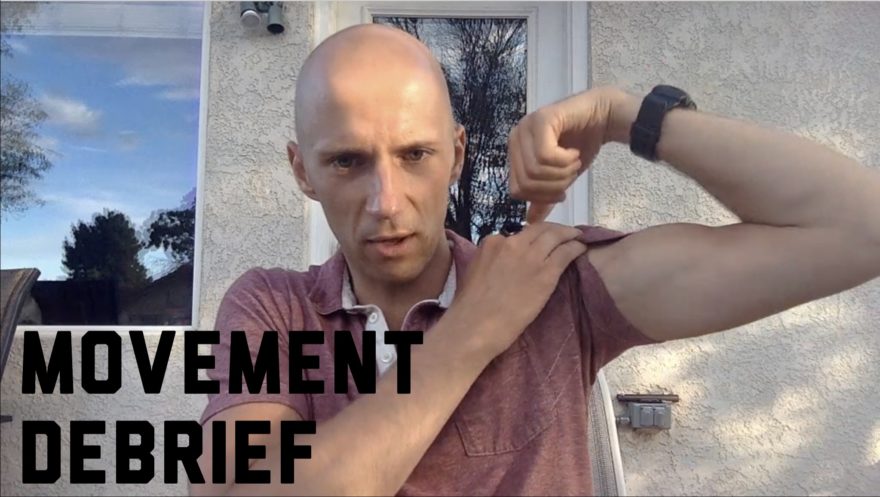
Trial and Error, Triplanar Movement, Networking, and Mentors – Movement Debrief Episode 11
Did you miss yesterday’s Movement Debrief? We had a lot of fun. The first time I went on facebook, twitter, and Instagram simultaneously. This debrief was a bit different, as it didn’t involve as much reflection on my patient care, but more on the wonderful continuing education weekend I had. I got to spend time with all my friends learning about a lot of different things. And it led to some great reflections. Here’s what I talked about: Why trial and error is important Being outcome-focused How triplanar movement impacts single plane movements Why having a good network is important Keys the networking The importance of mentors If you want to watch these live, add me on Facebook, Instagram, or Twitter. They air every Wednesday at 8:30pm CST. Enjoy. Trial and Error Triplanar Movement Networking Mentors
Read More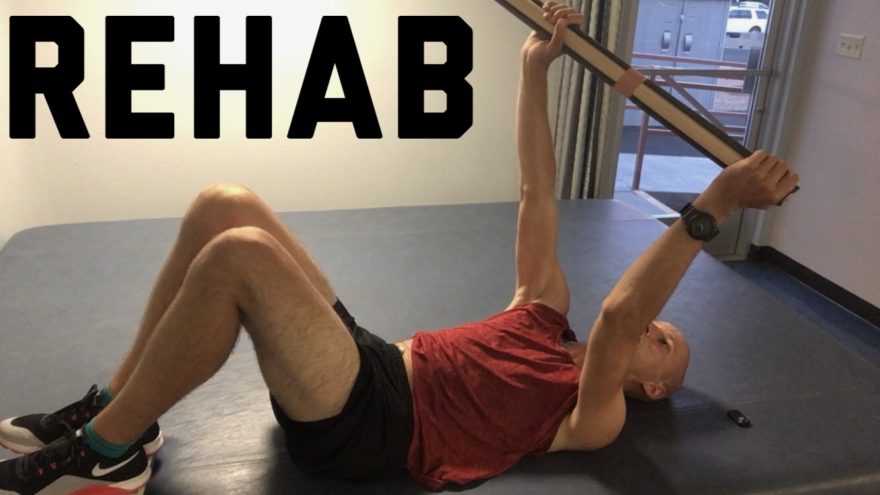
How to Design a Comprehensive Rehab Program
Just when I thought I was out, the clinic pulls me back in. Though I’m glad to be back. There’s just a different vibe, different pace, and ever-constant variety of challenges that being in the clinic simply provides. This has been especially true working in a rural area. You see a much wider variety, which challenges you to broaden your skillset. I’m amazed at how much working in the NBA has changed the way I approach the clinic. Previously, I was all about getting people in and out of the door as quickly as possible; and with very few visits. I would cut them down to once a week or every other week damn-near immediately, and try to hit that three to five visit sweet spot. This strategy no doubt worked, and people got better, but I had noticed I’d get repeat customers. Maybe it wasn’t the area that was initially hurting them, but they still were having trouble creep up. Or maybe it was the same pain, just taking much more activity to elicit the sensation. It became clear that I was skipping steps to try and get my visit number low, when in reality I was doing a disservice to my patients. This was the equivalent of fast food PT—give them the protein, carbohydrates, and fats, forget about the vitamins and minerals. Was getting someone out the door in 3 visits for me or for them? The younger, big ass ego me, wanted to known as the guy
Read More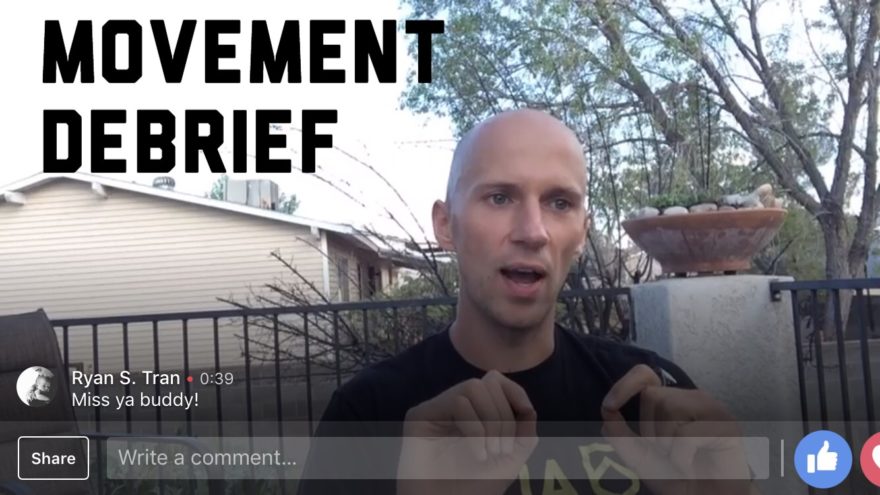
Lat Stretch Arm Position, Exercise Programming, and Staying Neutral? – Movement Debrief Episode 10
Episode 10 of the Movement Debrief, we went straight up q&a from readers. It was a lot of fun and I got a lot of great question from people. Here was what we discussed: Should the arm be in internal or external rotation when stretching the lats? If general exercise works, why should we incorporate specific exercises? Why coaching exercises well is of utmost importance Is staying neutral in a good joint position important? If you want to watch these live, add me on Facebook or Instagram. They air every Wednesday at 8:30pm CST. Enjoy. Lat Stretch Arm Position Exercise Programming Staying Neutral?
Read More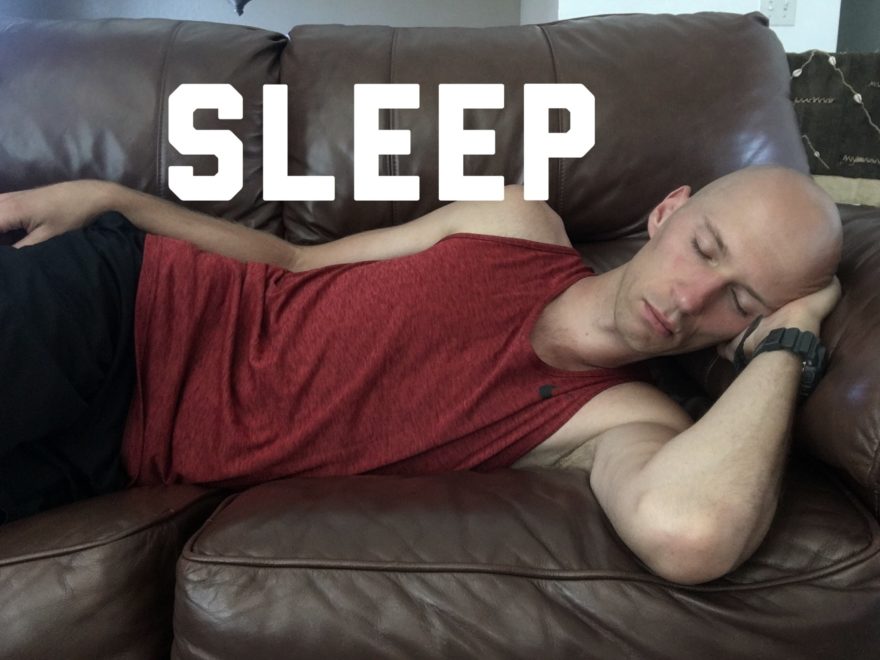
How Sleep Saved the D-League – Resilient Podcast
Sleep is a big deal. Not only has a lack of sleep been linked to many big bad diseases, it also contributes to poor performance. Behavior change through education and persuasion is hard enough as is. We are all resistant to change, namely because our current habits and routines require Herculean willpower efforts to break. This problem is especially true in non-conducive environments. It’s hard to eat healthy when your family cooks fried foods and orders pizza for dinner every night. It is these situations where we just have to make the most with what we have, and that’s exactly what I spoke about on one of my best friend’s podcasts, Doug Kechijian. Before we go into the content, let me tell you a bit about Douglas, my younger-older brother. Doug and I first met way back in 2013 at a PRI course in Phoenix. I was the first person who arrived in town, and it was up to me to take care of the rental car. We had five bros to get to the class, so I needed to find something cozy that could fit everyone and their luggage to and from the class and Phoenix airport. So I’m looking at some midsize SUVs, a couple sedans, trying to find the right car that I could fit everyone in. Then I saw this: Doug and I had never met before, and he was the first person I had to pick up. He asked “what will you be driving?” I
Read More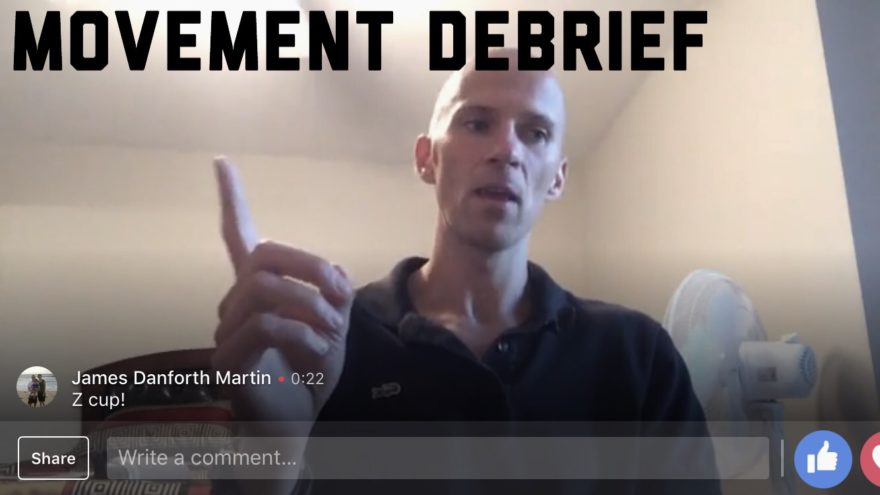
Workers’ Compensation, Dealing with Late Patients, Fall Prevention, & More – Movement Debrief Episode 9
Episode 9 was a long one, and I’m so sad if you missed it live. Here were some of the topics: The necessary organizational fix to worker’s compensation Ways physical therapists can have patients simulate work Targeting educational-specific impairments The need to expand scope or collaborate to help clients thrive How to deal with patients who are always late and don’t do their exercises Working on getting up off the ground after a fall If you want to watch these live, add me on Facebook or Instagram. They air every Wednesday at 8:30pm CST. Enjoy. Workers’ Compensation Explaining Pain Simply Expanding Your Scope Dealing with Late Patients Fall Prevention
Read More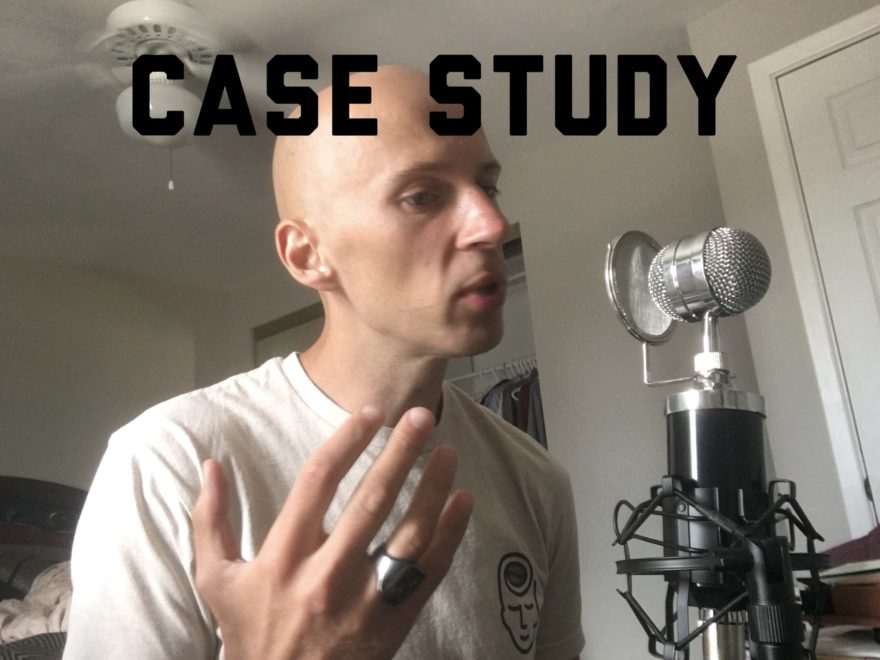
Return to Play after a 5th Metatarsal Fracture – Case Report
I was recently featured on my buddy Scott Gray’s podcast, a great clinician in the Florida area who I have a lot of respect for. Before we dive into the podcast, let me tell you a bit about why I like this guy so much. It’s not just because he is a part of the IFAST family. I’ve been going back to the basics as of late, reviewing concepts such as tissue pathology, anatomy, surgical procedures, and the like. If there is anyone who has the fundamentals down savagely well, it is Scott Gray. He put out an Ebook called “The Physical Examination Blueprint”, which you can download by subscribing to his newsletter. Here he details all the essentials on screening your patients. To me, the most important aspect of patient care is knowing who you can and cannot treat. Stratifying your patients based on who needs to be referred out, and who you can help is essential to providing the best care. Quite simply, there are few better resources out there that outline how to do this than Scott’s ebook. In it, he delves into what relevant questions to ask, tests to perform, and establishing a relevant diagnosis. Often underlooked, yet exceptionally important components of the clinical examination. Again, I cannot recommend Scott’s ebook and site enough. It’s a great resource for many things PT, including many of his eclectic and unique manual therapy techniques. Definitely check this guy out. Rehabbing a 5th Metatarsal Fracture to High Level Basketball In
Read More
The Art of the Debrief & Work/Life Balance – Movement Debrief Episode 8
Episode 8 of the Movement Debrief, despite technical difficulties, persevered. In case you missed it live, we talked about the following topics: What is a debrief? How I structure my debrief Balancing work, social interaction, health, etc What makes you you If you want to watch these live, add me on Facebook or Youtube. They air every Wednesday at 8:30pm CST. Enjoy. The Art of the Debrief Work/Life Balance
Read More
How to Treat Pain with Sitting – A Case Study
Case studies are much more valuable than many give credit for. It is this type of study that can often lead to sweeping changes in how further research is conducted, often create paradigm shifts in their own right. After all, there was only one Patient H.M. One thing that I wish I saw more in case studies was the clinician’s thought process. Why did they elect to do this treatment over that, what were they thinking when they saw this? How do they tick? I was fortunate enough to have an online client of mine suggest to that I make her a case study, and it was a very rewarding experience on both fronts. My hope is that you can see how a clinician thinks first-hand, and see the challenges a clinician faces… When you can’t work with your hands.
Read More
Master the Fundamentals of PT, Neurodynamic Tricks, & Check Your Ego – Movement Debrief Episode 7
Episode 7 of the Movement Debrief (aka The Movement Awakens) occurred last night. I can only imagine how devastated you are that you missed it. But hey, though I think it’s way more fun live, I have a copy of the video below, where we discussed the following topics: Why fundamental PT skills are still relevant Why the basic clinical exam is incredibly important Determining if you can or cannot help your patients A simple trick to making any movement a neurodynamic test Doing what is best for the patient, not your ego or agenda If you want to watch these live, add me on Facebook or Youtube. They air every Wednesday at 8:30pm CST. Enjoy. Master the Fundamentals of PT Neurodynamic Tricks Check Your Ego
Read More